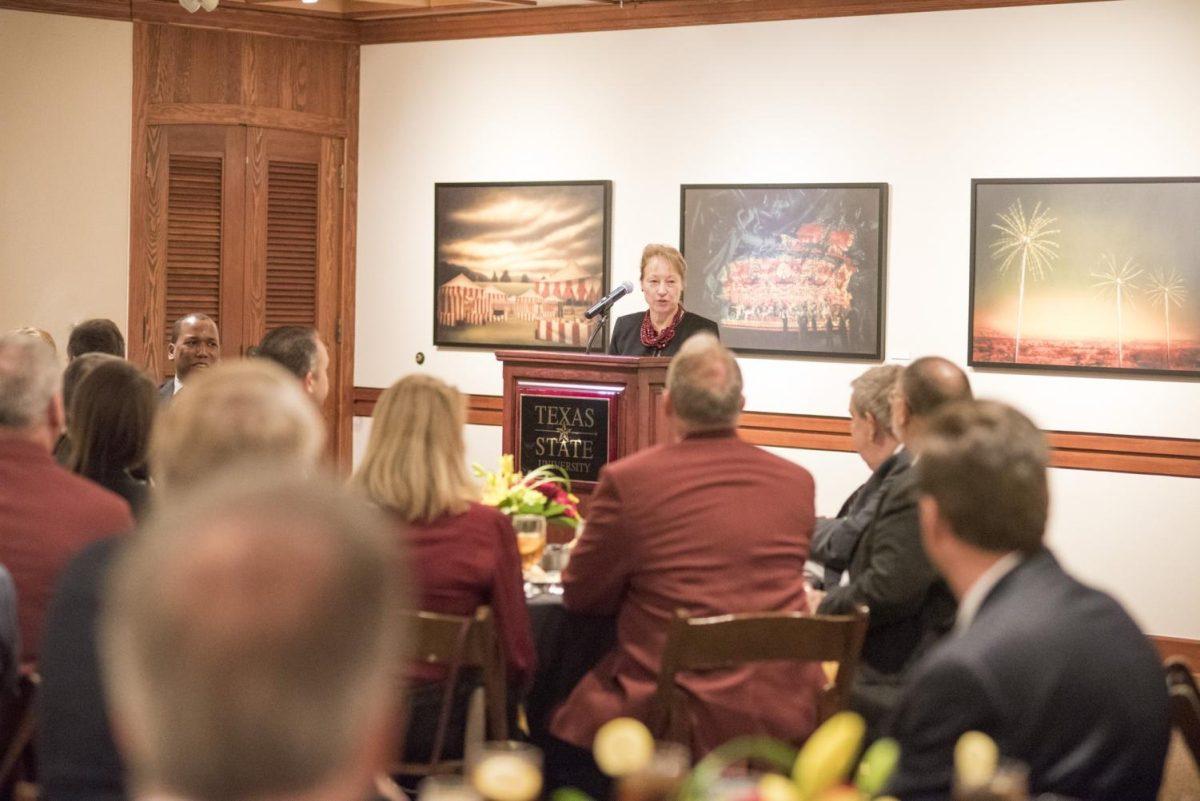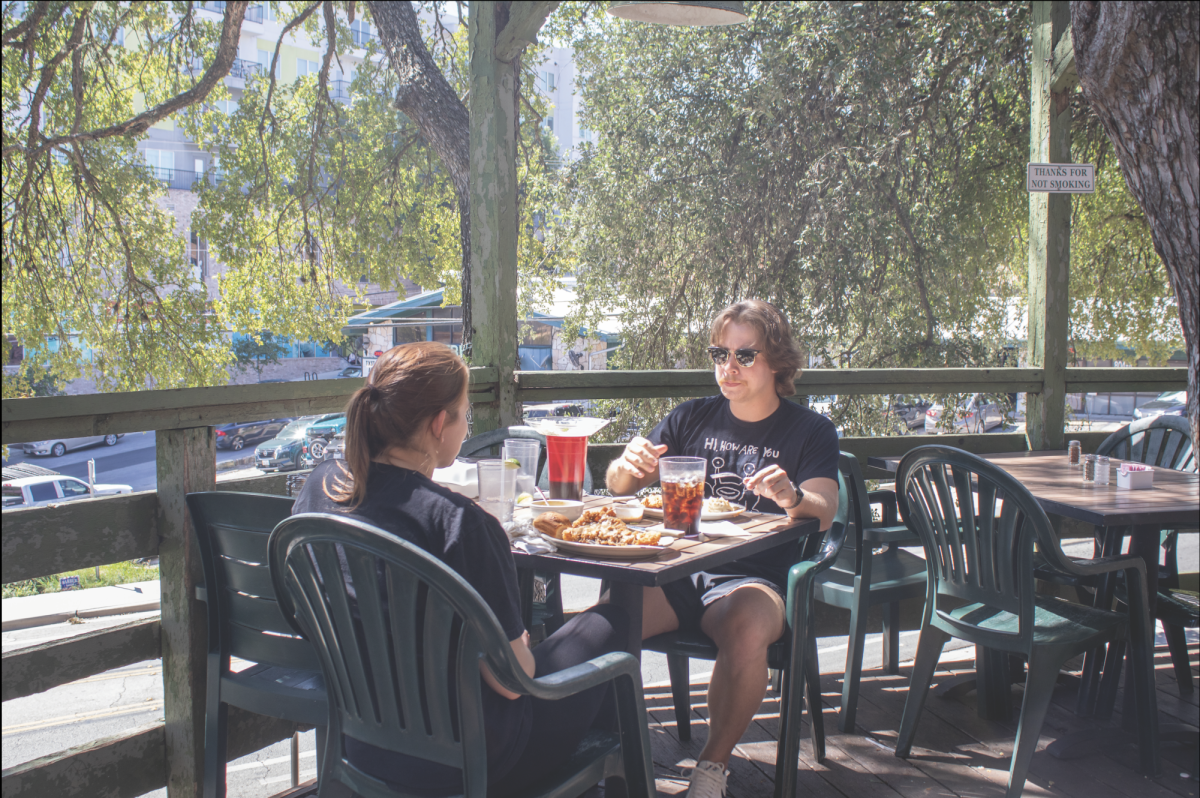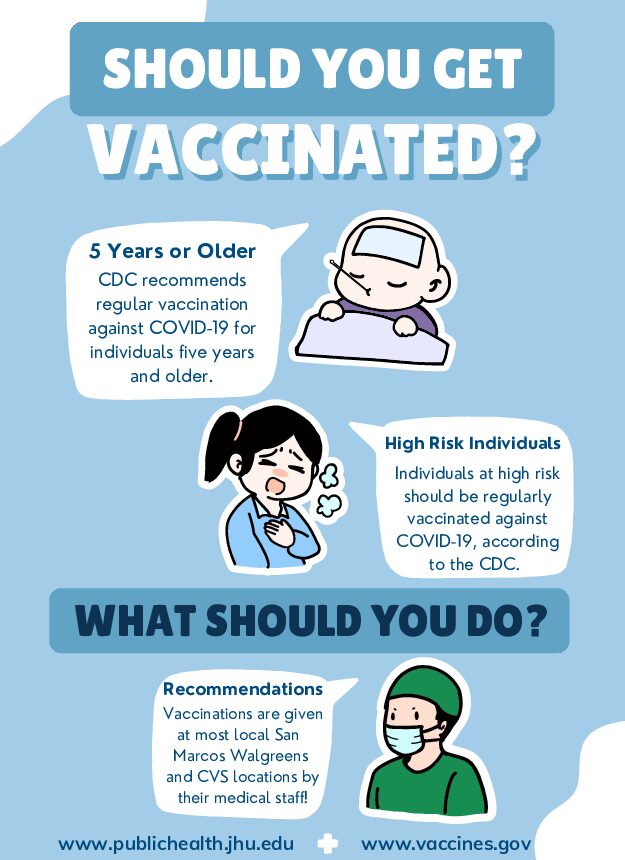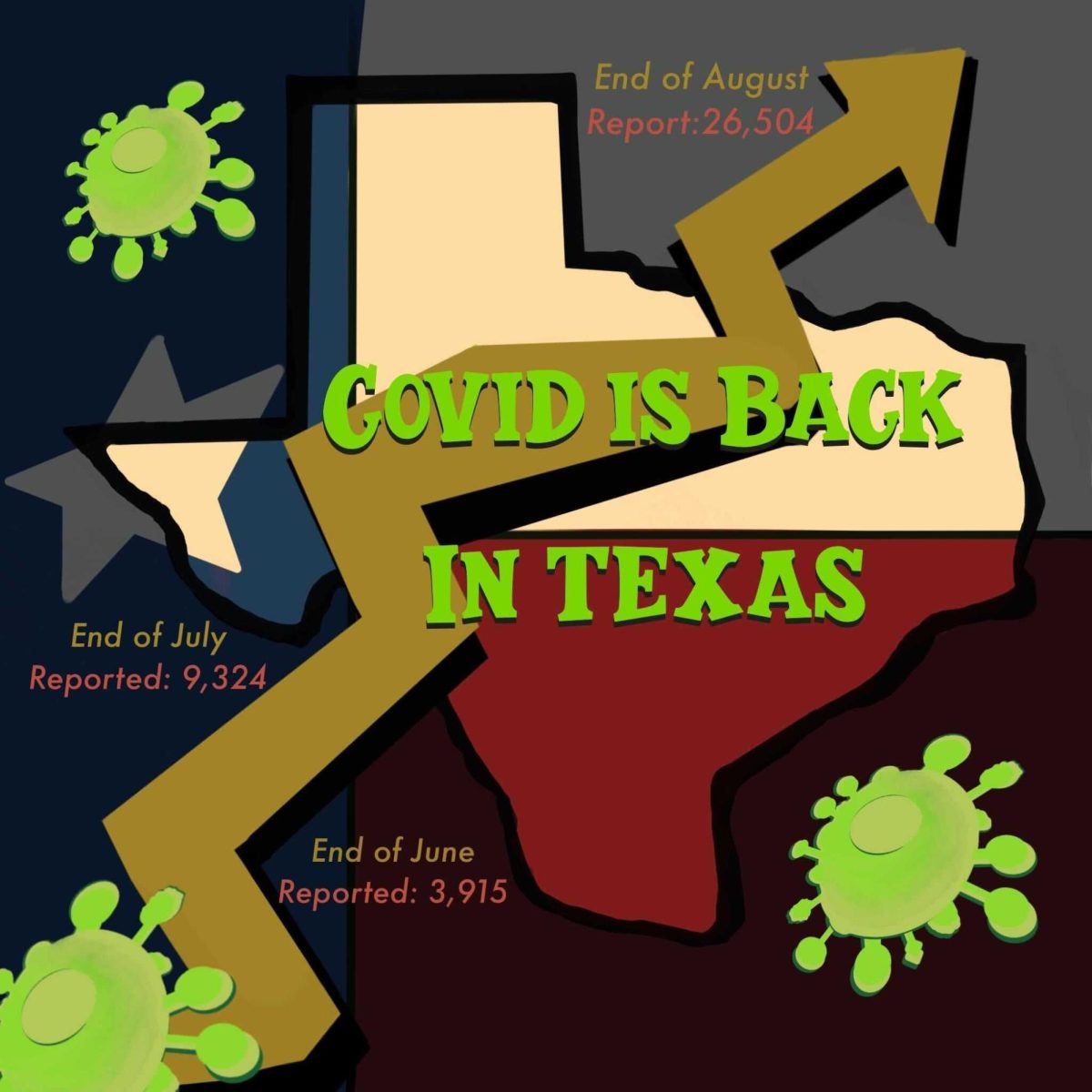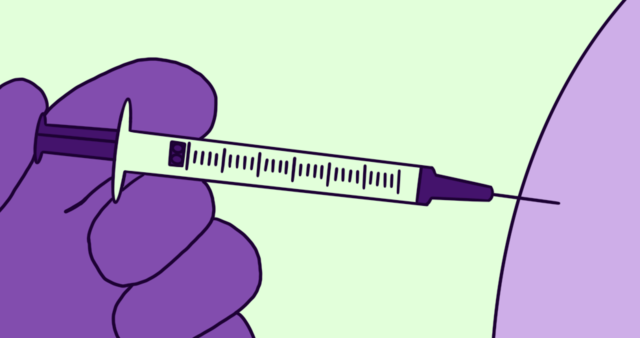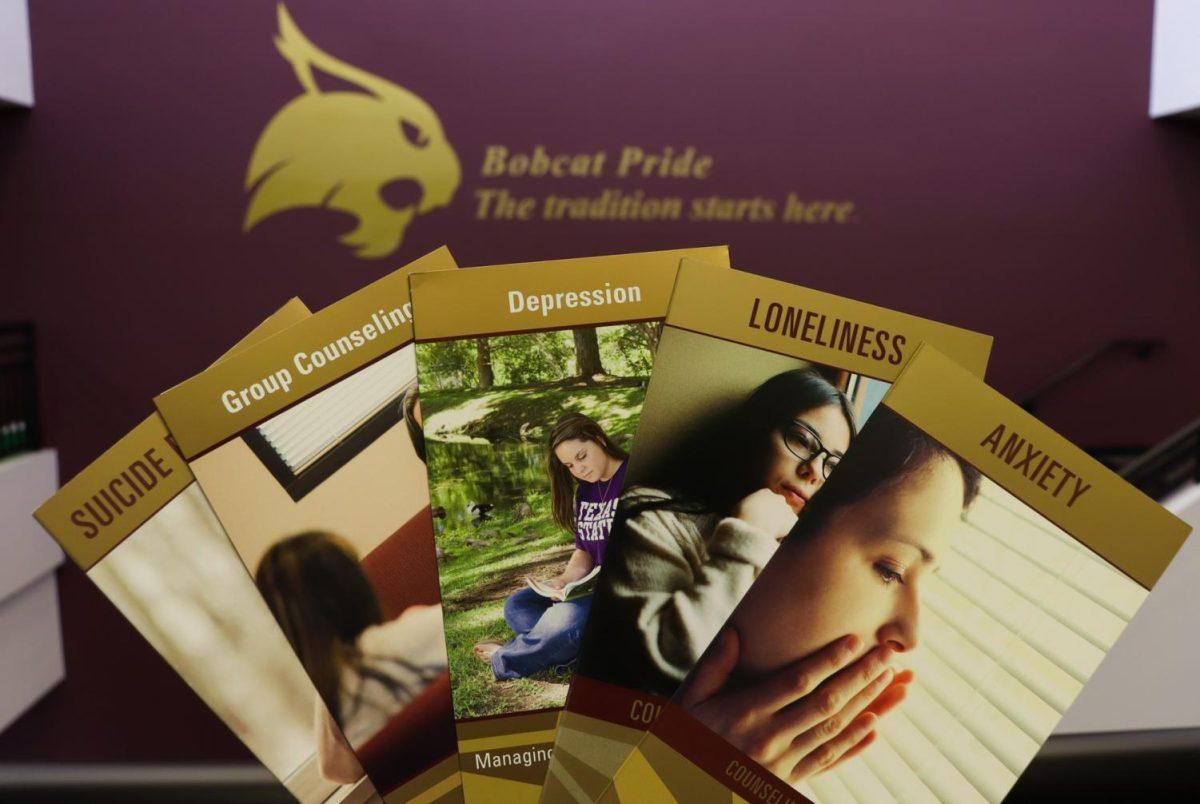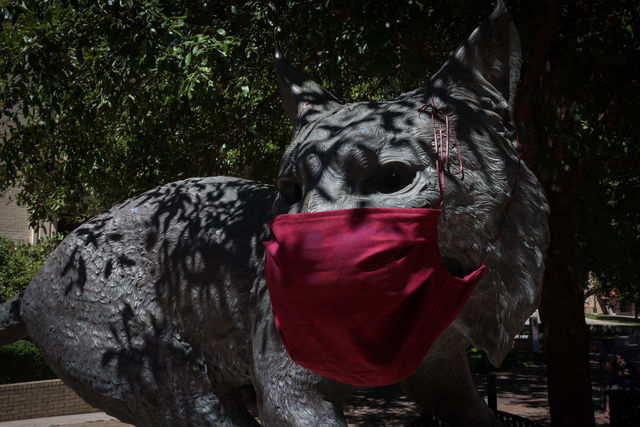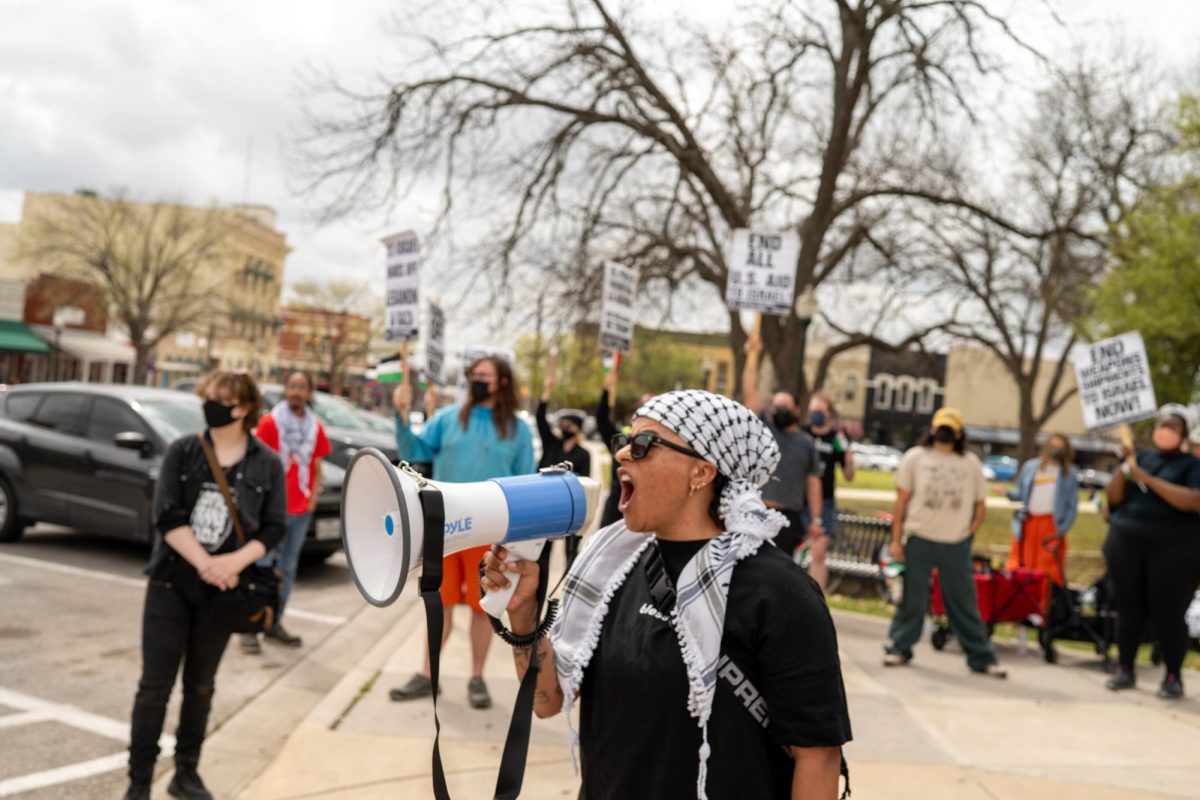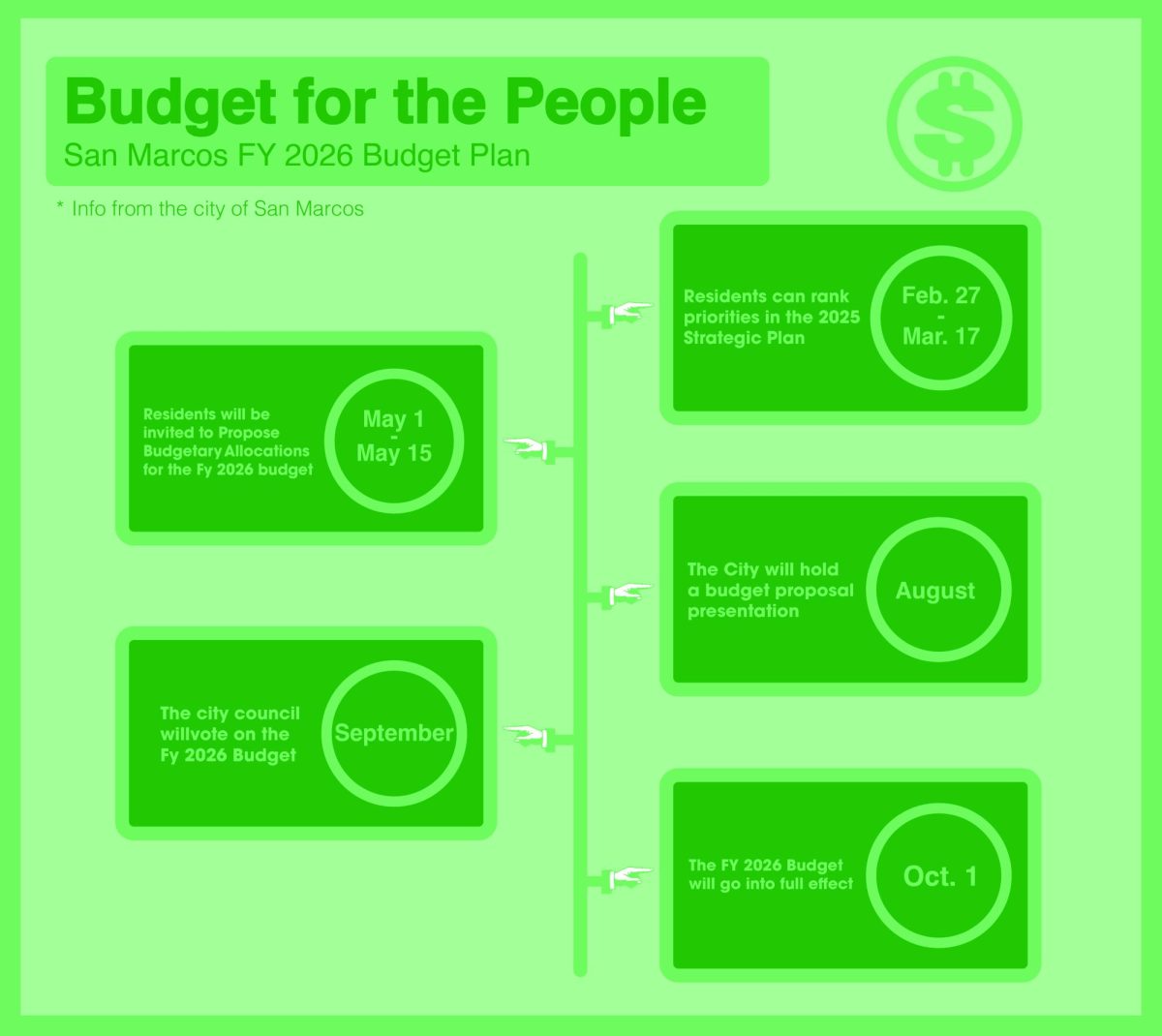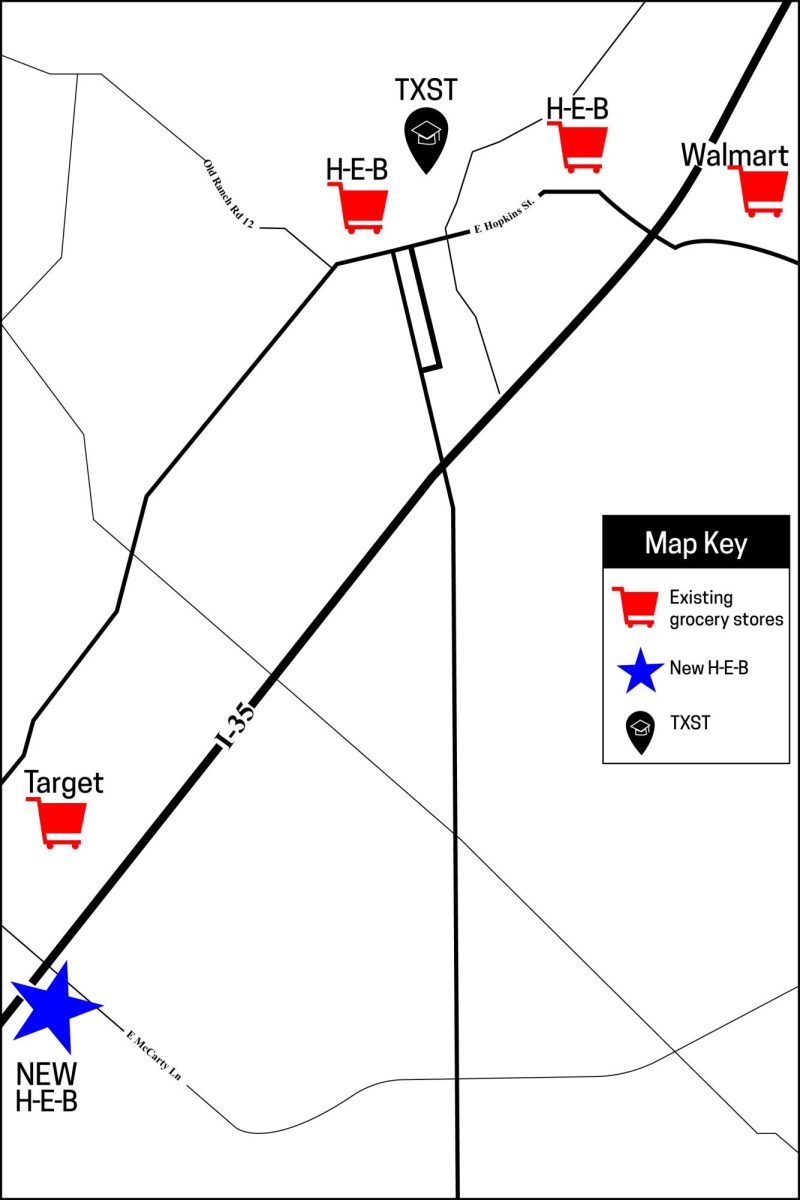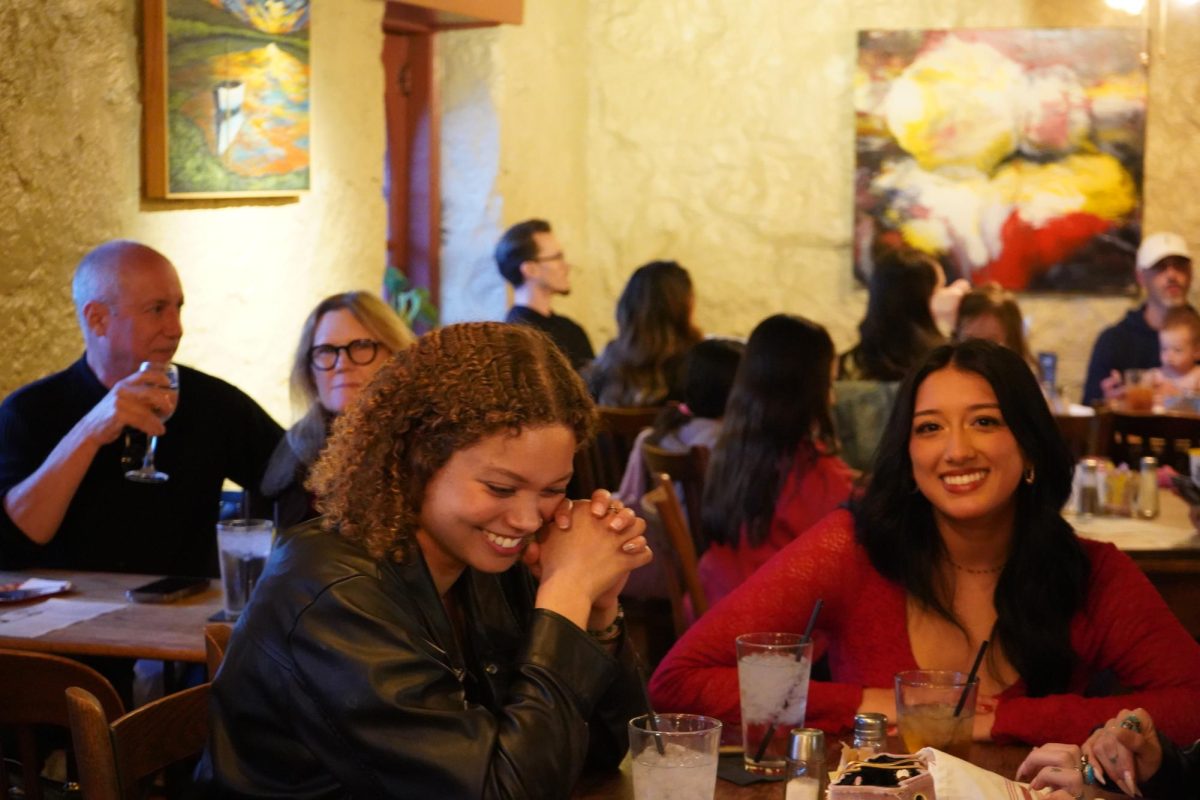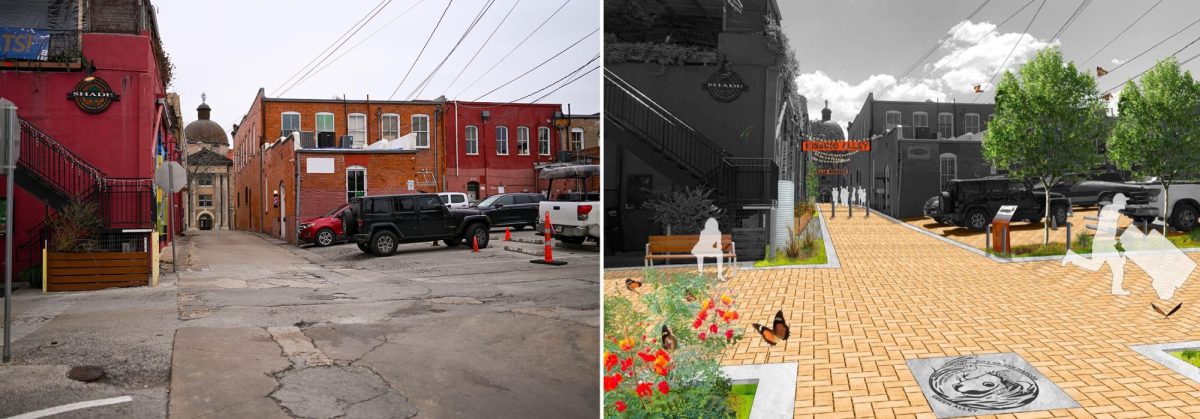On June 25, Editor-in-Chief Jaden Edison spoke with President Denise Trauth, Dr. Lisa Lloyd and Sandy Pantlik about Texas State’s ‘Roadmap to Return’ to campus during the COVID-19 pandemic.
Obviously, you know, with everything going on, the big question that I just want to go ahead [and put forth] right away that a lot of the student body has been asking us at The Star: The university is continuing its plan with the Roadmap to Return, [and] at any capacity, we have record hospitalizations in Texas; [COVID-19] cases are rising rapidly in Hays County; San Marcos leads the way with almost 2,000 cases as we speak right now, so I’m wondering—why follow along with any plan [to return face-to-face] knowing that Bobcats’ lives are potentially at risk with everything going on?
Trauth: Well, there’s a couple of things that I think I want to kind of layout here in my response, and then I’m going to invite Dr. [Lisa] Lloyd to jump in. But first of all, when you look at our plans, and as you know, I think we have eight workgroups that have focused on various pieces of this, and the people [in] the workgroup are the experts in the areas. So we had all these workgroups preparing, but they all worked within three scenarios. And the first one is the scenario of the new normal, we come back and it’s the new normal. So we’re never, or at least not anytime soon, going back to before COVID. But the new normal for example, [is] everybody [having to] wear a face mask. So that’s scenario one.
Scenario two is when COVID-19 escalates but is not necessarily affecting both campuses, maybe Round Rock is fine and San Marcos has it, or flipped. And then the third is the one in which we would essentially go back to where we were in March and April. So we have been planning in all three scenarios. We’re not just planning in the first scenario.
The second thing that I would really emphasize with you is that right now, we are about 60 days away from the first day of fall classes. And if you look backward 60 days you’re on April 25. And when you think about how much more we know about COVID-19 now than we knew 60 days ago, it tells me that we have to plan, plan, plan, but we also have to incorporate and adapt to all the new things that we’ve learned.
I mean, think about it, we were not wearing masks 60 days ago. And today, we know that the single most important thing you can do to keep yourself safe and to keep others safe is to wear a mask. And the reality is, according to people who are doing a lot of research on this, if we had been wearing masks all along, the pandemic wouldn’t be anything like it is today. But we didn’t know. We didn’t know that we didn’t know enough. It’s nobody’s fault. We just didn’t know that. So my point here is we are planning in these various scenarios. But also, we are planning, knowing that our knowledge base is growing and that circumstances keep shifting.
Lloyd: All I was going to really add is that in making the decision of how we’re going to be operating, it really depends on a lot of factors. Not just a number of cases as an example, but there’s the percent of positive tests, the percent of cases linked to other known cases, the hospitalization rates, but also federal, state and local policy prevention methods. So, as Dr. Trauth said, the number one prevention method is wearing a face mask, testing capacity, contact tracing capacity, treatment capacity and quarantine capacity. So, there’s not just one indicator as to whether we are online fully or some sort of mix between online and face-to-face. So there are many, many factors that go into play in making our decisions about University operations.
And then the other thing that I wanted to say is like Dr. Trauth said, we are not planning for one scenario. And what that means is, we are preparing to be able—we’re very nimble—we’re preparing to be able to make changes based on the current situation. And so I don’t think it would be wise for us to just make one decision and not plan for a multiple of different scenarios. And so, that’s why you are seeing some fluidity to our responses because I think it’s the right thing to do.
So building on that a little bit, you know, obviously, there’s [an] argument that could be made from anybody in the Texas State community [that] regardless of what preventative measures are in place, whether it be a face mask or social distancing, at the end of the day when you bring students back on campus, there’s still that risk [of contracting the virus].
And another concern of members of the Texas State community is, you know, there’s this notion that any move made to get students back on campus, no matter the plan, [is] to essentially keep the university financially afloat as opposed to placing student life, safety and health first. So do you all think that’s a fair assertion, and why or why not?
Trauth: We’ve always had the safety of the students, first and foremost. The financial considerations have never been the motivation behind our planning. And this is as complex a situation, I think, the university has found itself in [over] the last several decades. Our students, for the most part, pick Texas State University because they want the interpersonal experience that we are known for.
It’s why people pick Texas State, as opposed to picking an online university, which they could do. I mean, if you look at, for example, Southern New Hampshire University, it [has a big online program]; you could get a degree sitting in Texas from that university [and it] would be an online degree. But that’s not who Texas State is. We are known for the care we give to our students. We’re known for the deep interpersonal relationships that our students build.
And I heard from many, many students during the stay-at-home order. They were valiant. They were brave. They persisted. They finished the semester, but they didn’t like it. They didn’t like the remote instruction. And so bringing students to San Marcos and the Round Rock campus, that’s who we are.
Secondly, many of our students work. We estimate that about 70% of our students work at any given time. And that work that students do is primarily in San Marcos. So some percentage of our students, even if we went to fully remote, are going to be in San Marcos—because they’re going to work. They’re not going to be wherever their parents live. They’re going to be here in San Marcos.
What we’re experiencing in San Marcos right now is what is called community spread. It’s obviously not happening because of the university because we don’t have any students on campus right now— everything is remote, but it is spreading within the community. So what we really have to do is partner with the community and do the kinds of things that really, truly have been scientifically shown to work. If we could get everybody in San Marcos to wear a face mask, we could literally bring the spread rate down to close to zero. It’s that powerful. Wearing a face mask is that powerful.
Editor’s Note: The Star cannot 100% verify the accuracy of President Trauth saying ‘If we could get everybody in San Marcos to wear a face mask, we could literally bring the spread rate down to close to zero.’ It is recommended by the Centers for Disease Control and Prevention, however, that people wear face coverings in public where social distancing is difficult to maintain. Further, Hays County issued an executive order that went into effect June 22 requiring face masks in public.
Lloyd: Just speaking about summer II: At our peak time in summer II, which I think [is at] 10 a.m., we’re going to have 1,950 students on our campus at its peak time—that’s 5% of our capacity. This campus is built for, you know, holding 40,000 students. So when we talk about reduced density, that is a very minimal density for summer II. And so I do want to emphasize that point that we’re going to be spread out, our students will be spread out and many health measures will be in place and enforced for summer II to protect our students.
Building on the capacity, like you said, 1,950 is about 5% of the 40,000 [students] that are normally on campus. And it’s also to my understanding that that’s going to consist of the classes in which some professors have a decision as far as holding the [class] in-person or online, and then on top of that, it will consist of students in the clinical and lab-based courses which you all noted ‘they require face-to-face, hands-on instruction for effective learning.’
So what plans does the University have in place for students who might absolutely need to take a certain course that is required in person, but they fear contracting COVID-19 while doing so. I imagine there are some students who need those courses to stay on a steady path toward graduation.
Trauth: Well, I think that it is fair to say that our faculty showed incredible flexibility during the second half of the spring semester, in terms of working with students on a lot of different levels. And our students were successful as a result of that. I believe that our faculty is going to exhibit the same flexibility here as we move into summer II and move into the fall.
What students need to do is they need to be talking to their advisers to see if it’s a required course, to see if there’s a substitution, but their advisers really are the single best people to help them address that. But I believe in the backdrop, our faculty are going to be flexible with our students.
Lloyd: And I just want to add that we are equipping our faculty with being able to record lectures so that students that, for instance, are self quarantining can still [learn]. Let me first say: Faculty will be using Canvas so that our students, if they are quarantined and can’t come to class as an example, will still be able to engage in online learning even though it’s a face-to-face course. So we are trying to equip our faculty with that level of flexibility for students who may have some underlying condition that prevents them from being in the course as well.
So obviously summer II is in the next couple of weeks. But the fall semester is the big question for everybody. Some schools are looking at [starting at an] earlier start date and letting students out around that Thanksgiving timeframe. So, at this point in time right now, what is Texas State planning to do for the fall, exactly? What does that look like right now, from a planning standpoint?
Trauth: Right now, we have not changed either the first day of classes or the last day of exams. So we will have the first day of class on Aug. 24, and the last day of exams [is December 11]. So we are not changing that.
We, of course, as I think we said a couple of months ago, we are monitoring—we’re constantly monitoring the situation. But right now, we do intend to stick to the beginning and the ending of the semester as it’s been publicized.
Lloyd: If you think back about the scenarios, we are prepared to always shift and transition if we need to. Our faculty are prepared to do so, [and it will be included] in [students’] syllabi, to know that, you know, there might be a possibility where the course has to transition to online, depending on if there is a cluster or a local spread.
I assume that face-to-face is [still] the primary goal for [the fall semester] right now. Is that accurate to say?
Trauth: Yes, that’s correct.
In any scenario, you’re gonna have students who won’t feel safe returning to campus. So if that best-case scenario happens and the university does conduct in-person classes, will an online option also be made available to everyone–even people who are in labs or those things that really do require the face-to-face?
Trauth: Again, I think the single best thing students can do to answer that—that question has to be answered on the course level. And students need to be in contact with their adviser to get the answer to that.
I’m just not able to commit to you right now that, for example, [that] every lab can be offered virtually [and] every clinical experience can be offered remotely. So I really think the students [that] have that question [need] to be talking to their advisers.
Will there be any student tuition refund for services [and facilities] students likely won’t use, in any [of the scenarios]?
Trauth: We went down this road in the spring, and we refunded housings, dining and parking for students. I don’t want to begin to get into how we would deal [with refunds] until we know what we’re dealing with. And as we’ve been saying, you know, there’s a range of possibilities here in terms of what could happen this fall.
Everybody’s expecting a significant drop in enrollment. I think, President Trauth, you listed [an 8% drop in enrollment]. So with that being said, that inevitably might lead to more budget cuts, reduced hours, [some] early retirement from faculty, right?
With all this going on, will high-ranking university officials, such as you (Dr. Trauth), Dr. Lloyd, Dr. Bourgeois, you can go on and on and on. Are you all taking any pay cuts with everything that’s going on with budget cuts and whatnot?
Trauth: Well, none of the budget cuts that we have anticipated—and you’re absolutely right—we planned for an 8% decrease in enrollment. As of this week, it looks right now it’s a 4% decrease in enrollment for the fall.
But that number changes every week. But there have not been salary cuts. We’d never contemplated salary cuts for faculty or staff in the budget cuts that we made here in this planning process.
Would that be a worst-case scenario deal? If that’s something that does happen?
Trauth: It might be… I don’t see that happening this year because I think we really went through a rigorous process. And it was really a rigorous process to figure out how we would cut with an 8% decline in enrollment. Plus, there’s also a cut that’s coming from the state. So we went through a rigorous process, and I don’t anticipate us having to cut salaries of faculty and staff.
Now, having said that, I don’t have a crystal ball. I can’t foretell the future. And the one thing that we know about COVID-19 is that it’s unpredictable. But right now, we don’t contemplate any kind of cuts for faculty and staff salaries.
So, like you say, face-to-face right now is the main goal—
Lloyd: Can I just interject one thing? We are really trying to offer a variety of modalities. So always, when we talk about face-to-face, I fear that people forget that we are also focused on hybrid, as well as online. So there’s a variety of modalities that we want to deliver our services—instructional and student support services. It’s a small distinction that I think is important.
If a student or faculty member tests positive, what does that process look like as far as letting those in close contact know? You might have a scenario where you might have to replace an instructor depending on how severe [their] reaction is to [COVID-19]. What is that process as far as that individual returning to campus—all those general things?
Lloyd: There are three webinars that will be delivered in the next week [and] they’re going to be covering how we will address the issue that you raised, from contact tracing to self-quarantine to quarantine, to what happens if a student is diagnosed, versus what happens if the faculty is diagnosed. So we have a webinar specifically for supervisors, specifically for faculty and then we have one that’s just an open Q&A for questions just as that. But the purpose of that webinar will be to address health and safety concerns just like that.
We have our roadmap. And in our roadmap, there’s an employee guide, and then there’s also a student roadmap and a faculty roadmap. We actually update those every single day. But in those roadmaps is our specific ‘here’s what you do in the event that a student is diagnosed or a faculty member is diagnosed.’ We are increasing our contact tracing capacities; we’re developing an app that will help in that endeavor.
And then, you know, one of the things is that we have asked all of the departments to have a contingency plan, in the event that a faculty member, as an example, becomes sick. ‘Who is going to be their substitute for those 14 days or however long they’re out?’ So we are building contingency plans for that very thing that you asked about.
And then, with regards to wearing a face mask, everyone in a classroom is going to be required to wear a face mask. So if a student in a particular class is diagnosed, the contact tracing efforts, you know, don’t necessarily have to be the whole class. Of course, it’s going to be up to the Student Health Center to guide those efforts. But it may just be the students that are sitting around that student because every single person is supposed to be wearing a mask.
And so we’re going to require our faculty to have seating charts so you know where [and] who that student is sitting by. So, I mean, those are just a few examples. But all of that is in our roadmap and will continue to be strengthened and fleshed out as more evidence and more information comes from our research and public health officials.
[The community knows] how serious COVID-19 is. I mean, President Trauth, you mentioned how serious it is to wear a mask and whatnot. And obviously, in our state, over 100,000 cases, right now over 2000 deaths, and many, many more on that national scale.
Is the administration prepared for backlash or outrage if any student, faculty—or whoever it is—administrator on campus, is placed in serious medical trouble, or worse, which would be loss of life as a result of contracting COVID-19 on campus during [any of the scenarios where students are on campus]…is the administration prepared to respond to that backlash that may very well come?
Trauth: Well, as I said a little earlier, from day one, when we started dealing with COVID-19, in late February, early March, health and safety have been at the top of our list. And the other thing that I think you know, but that I should emphasize here is Dr. Emilio Carranco, the director of our Student Health Center, has been at the helm. And he has been engaged. He was engaged with every single workgroup; he was engaged with every decision, every important decision that we have made. And we rely on him for good advice and we get good advice. So I want to give a shout out to him first of all for working seven days a week on COVID-19 and dealing with COVID-19.
There is no question that there are people who disagree with what we’re doing and the way we’re doing it. But I can tell you that our plans here are grounded in science. They’re grounded in public health. They’re grounded in doing the best for our community that we can possibly do. And we can’t predict the future. We can’t predict what’s going to happen. But we have to make good choices here. And we have to continuously look at those choices. Because a good choice that was made in April may not be a good choice in June and what is good in June may not be the right thing to do.
But I feel confident that we’ve got experts who are advising us [and] we are deeply engaged with the public health authorities who are advising us. And my great hope is that we can rely on the members of the Texas State community to do the right thing to wear face masks, and to bring the community spread down and essentially get the infection rate down much lower than it is right now. We can do that; we are capable of doing that; we just have to choose to do that.
Pantlik: I think that what we’re going through right now is just going to make us so much stronger as a university and I, you know, I’m energized [and] galvanized by all the efforts this university community has put forth.
I’m just amazed by all the people that have stepped forward to make sure that students are successful and that we are as safe as possible. And I just think we’re gonna be a much better community on the back end of this because we have just really become united. We had almost 130 faculty, staff and students, really guiding our efforts, and it’s just been an amazing experience in fortitude.
As far as relief funds—[Texas State] had the $30 million in [Bobcat Cares] relief funds. Will there be any more funds at all dedicated to COVID-19 relief? Are there any plans in place for that? I know some of that comes from the state or national level. We’ll be in the pandemic for the foreseeable future. So are there any plans in place to address [students] who may need some additional assistance?
Trauth: Well you’re right—at the heart of the Bobcat Cares program was the federal funding from the Cares Act that we received. And that basically we were required to disperse that to students and we have dispersed that to students.
Congress is taking up another act, another statute and Chairman Lamar Alexander in the Senate—I just read something today where he wants, in the next Cares Act he wants colleges and universities to be included. So I have great hope that the federal government will recognize, as you said, that that first tranche of money was wonderful. Students needed it; we dispersed it. And good things happened as a result of that, or at least some bad things didn’t happen.
So I’m hopeful that Congress is going to come up with additional dollars here that we can, again disperse directly to the students. But as you know, we’ve been going through budget-cutting exercises here at the university that go into effect, well that is in effect, so we don’t have the wherewithal to fund another Bobcat Cares here at the university, [but] I do feel good about Congress appropriating some more money here.
You all as an administration have given faculty until Monday, June 29, to make decisions regarding that change from face-to-face to [remote instruction or vice-versa] for summer II. Summer II begins July 6. It seems like students only have a week to adjust to whatever that decision is. So what went in to [setting] that [June 29] deadline?
Trauth: Yeah, I’m glad you asked that. [June 29 is] the latest [faculty] can make the change. Actually, Provost [Gene] Bourgeois announced [the deadline] back in April. When we delayed registration by a week, I don’t know if you remember that, but we delayed registration for summer and fall by a week, and we gave faculty the opportunity at that time to change a class that was going to be face-to-face to remote delivery and for summer II.
He reiterated that statement a couple of times. So actually [June 29] is the latest that they can do it. But they can do it—they could have done it any time since April.
I know some students have some questions about [Bobcat Shuttles] in the Roadmap to Return. [It notes waiting] times [will] be a lot [longer to implement] social distancing. But some students are concerned that this is going to result in more people trying to get on [one bus at the same time], which makes social distancing a little more difficult. Is that something that you all can clarify?
Trauth: Basically the buses are going to operate at 50% density. So they simply will not allow more than 50% of students. Students have to sit. There will be no standing because we don’t want people hanging on to poles and other surfaces. Everybody [will be required to wear] face masks—everybody who gets on a bus has to wear a face mask. If you want to talk to [Eric Algoe] he can elaborate.
The flip side of that too, and I think it’s kind of implicit in your question: ‘If the bus can only run at 50% capacity, then there might be students who would be late for class.’
We’re asking people to do two things. We’re asking students to plan ahead to make sure that they have enough time to catch a bus, which might be on the second run of a bus. And we’re asking the faculty, again, to be flexible, and understand that given this environment, students might have to wait to get the second bus. So I think we need planning on the students’ part; we need flexibility on the faculty part, but the buses are going to be cleaned and safe.
Lloyd: Okay, now, and I just did ask Mr. Algoe a similar question today, and he reiterated that the capacity will be capped at 50%, and that the bus drivers will, you know, the doors will be shut. The bus drivers will be monitoring the number of students that are coming onto the bus.
They are looking at ways to change the schedule to alter the shuttle schedule to really mitigate this capacity or to support the capacity reduction. So we’re just looking at better routes and improved routes and efficient routes and those sorts of things. [Algoe is] gonna rely heavily on the students to kind of monitor the shuttle schedule.
Is there anything else that any of you want to add? Obviously, there’s a lot of anxiety or concern over everything that’s going on—you got summer II kicking off [July 6]. And like you said, President Trauth, we’re about 60 days away from the beginning of fall classes. So is there anything that you want to leave students or parents with?
Trauth: I would plead with people to wear face masks. I mean, I know I’ve said this like four times in the last half-hour, but it really is the single best way to mitigate the infection. And if we will all do that, we can get our arms around this COVID-19, so I would really plead with people to do that.
The University Star’s social media followers contributed to questioning in this article.
Correction: In an earlier version of this story, the first reference of Provost Gene Bourgeois’ last name in a question included a typo. It has since been corrected; we deeply apologize for this error.
Categories:
Q&A with President Trauth about Texas State’s ‘Roadmap to Return’
June 25, 2020
Texas State President Denise Trauth speaks at an Alumni Luncheon during 2018 Homecoming Week. Photo courtesy of Chandler Prude.
0
Donate to The University Star
Your donation will support the student journalists of Texas State University. Your contribution will allow us to purchase equipment and cover our annual website hosting costs.
More to Discover



